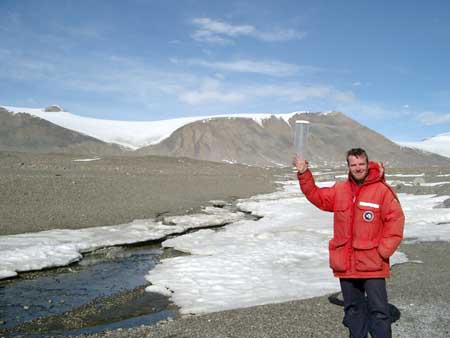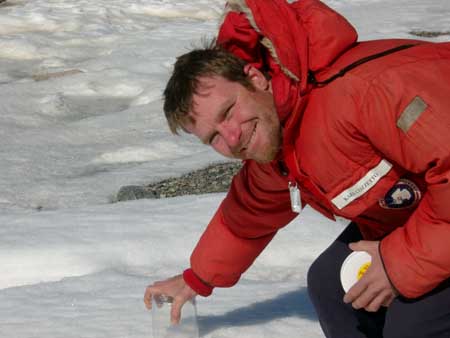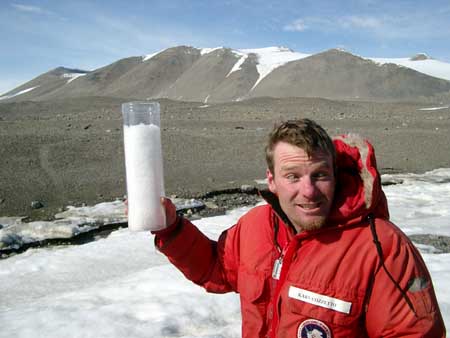 |
|
|
Home|Glossary|Links|Journal|Maps In a phase When we say that 6 mm of water fall on the Dry Valleys each year on average, we're not talking about solid water like snow or ice but about liquid water. You would have to melt more than 6 mm of snow to get 6 mm of liquid water. That's because the density, or mass per unit volume, of snow and liquid water is different. Wet snow, the kind you can make really good snowballs out of, has a density that is roughly half that of liquid water. Dry snow, the kind you find in the Dry Valleys, has an even lower mass to volume ratio. Freshly fallen Dry Valleys' snow may have a density that is only one tenth that of liquid water reports Thomas Nylen, a Dry Valleys' glaciologist. Snow that has been around for a while, however, will be more dense than that. This is because the shape of the snow crystals changes. You've probably seen pictures of new snowflakes with their nice six-pronged form. But as the snow gets blown around and collects in drifts, the prongs of the flakes break off, and the snow crystals pack together more tightly. John decided to investigate this by
gathering snow from a drift that had been in Von Guerard Stream since
we had arrived in the Dry Valleys. He got a clear plastic, cylindrical
container, filled it with snow, and marked the snow level in the container.
He then put the snow in a pot, melted it, put the water back in the
container, and marked the water level. The snow level was 27 cm while
the water level was 10 cm. Karen Click on the photos to see a larger view |



